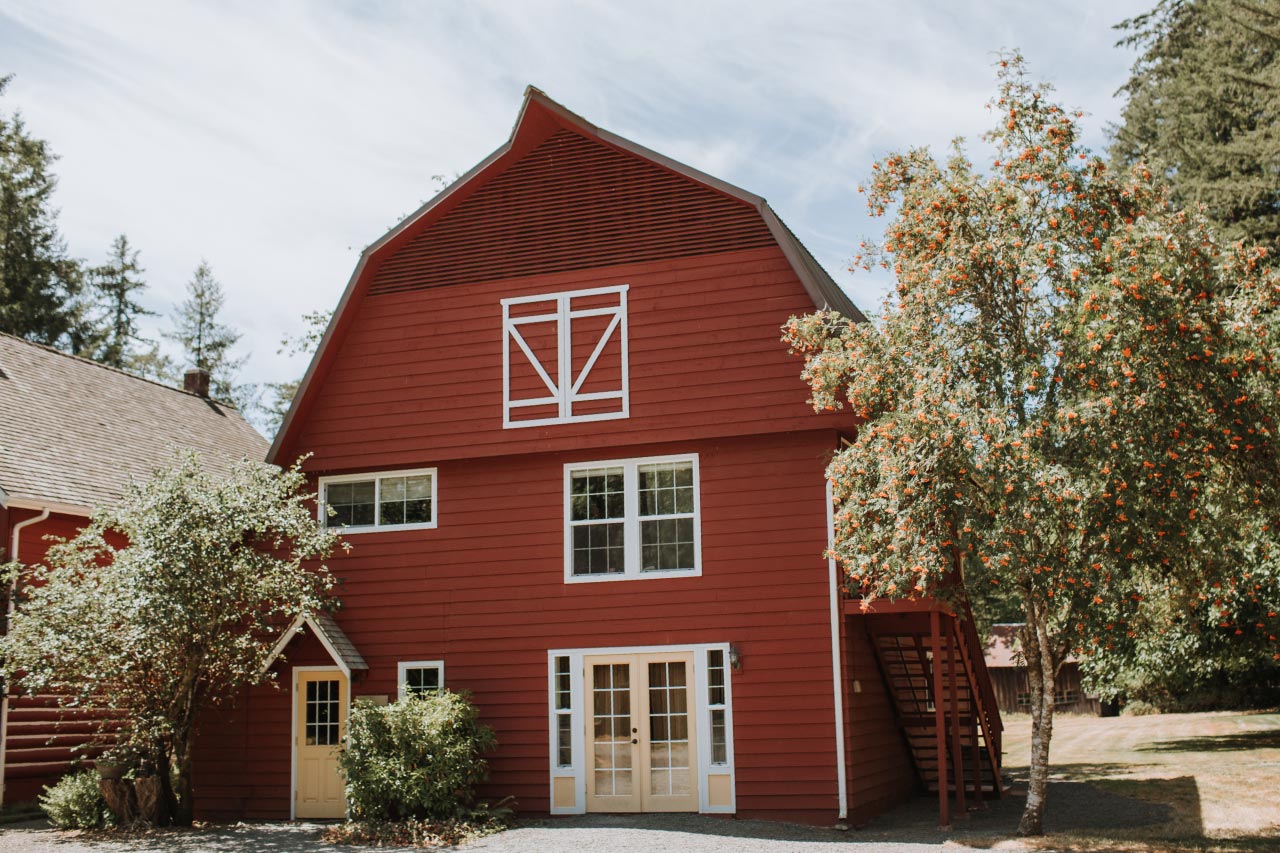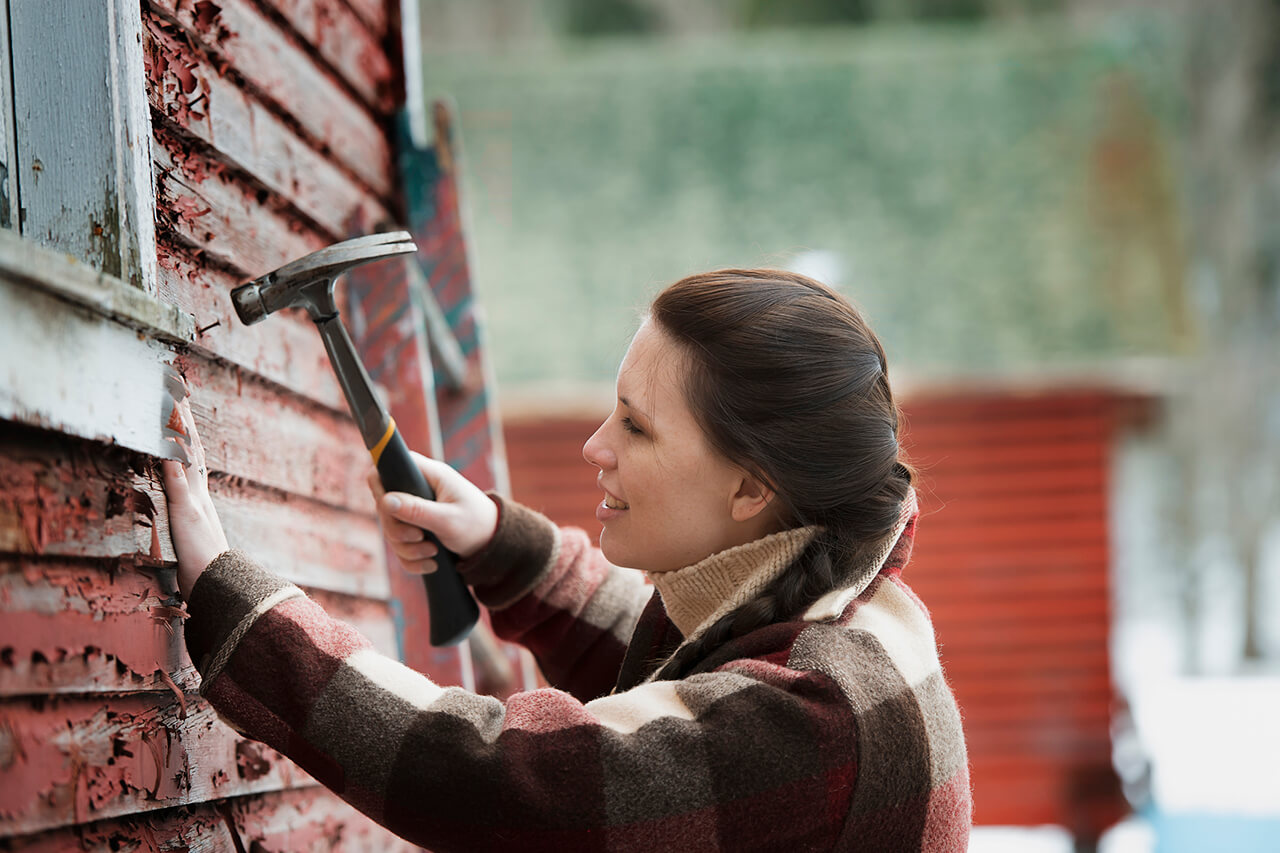How Much Does It Cost to Build a Pole Barn in 2023?
This project can cost anywhere from $4,000 to $50,000, so take a look at what could affect this price and get a quote from a pro.


2022 Notice: Material Prices Are Surging
Demand for siding and other building materials has grown over the past year. And as a result, manufacturers are increasing materials prices. Prices have gone up 5% to 10% this year, and many parts of the country are experiencing long delivery times. If you're planning a building project, we recommend starting as early as possible in the season, preparing for potential price fluctuations, and allowing extra time to order materials.
A pole barn house is unique because it doesn’t have a traditional foundation. Instead, poles are strategically placed in the ground to make a loose foundation. As the structure is built, the poles carry the load and support the structure.
Building a pole barn house with materials and labor fees averages to around $25,000, or between $15,000 and $30,000. Large, elaborate units can cost up to $100,000, while smaller DIY kits can be as low as $2,400. The biggest determinants of the final project price are the square footage, materials used, and the exterior and interior features you choose.

Pole Barn House by Size
Pole barns were originally used for agricultural purposes but have gained popularity in recent years for housing. They’ve even earned some interesting nicknames like “barndominiums'' and “shomes.” The chart below can help you estimate your pole barn house cost based on the square footage.
| Pole Barn Kit by Sizee | Average Price Range |
|---|---|
| Small (24'x24'x8' – 36'x48'x10') | $2,400 – $10,700 |
| Medium (36'x36'x12' – 40'x80'x14') | $7,000 – $21,000 |
| Large (40'x60'x16' – 60'x120'x16') | $14,400 – $51,000 |
| Extra-large | $49,000 – $100,000 |
"Pole barn building is fast and cost-effective, but it's not completely foolproof,” says Dan DiClerico, HomeAdvisor Smart Home Strategist and Home Expert. “For best results, work with a licensed and qualified pro who has experience with this type of construction."
Pole Barn House by Interior and Exterior Finishes
The table below provides some additional prices you should budget for when planning your pole barn house project.
| Pole Barn House Feature | Average Price Range |
|---|---|
| Paint | $400 – $2,000 |
| Doors | $500 – $2,000 |
| Drywall | $1,200 – $2,500 |
| Flooring | $1,500 – $4,000 |
| Windows | $2,500 – $7,500 |
| Insulation | $3,500 – $16,500 |
| Siding | $5,000 – $15,000 |
| Roof | $5,000 – $24,000 |
| HVAC system | $5,000 – $10,000 |
| Electricity | $10,000 |
| Plumbing | $11,000 |
| Foundation | $26,000 |
Paint
Painting metal siding costs between $400 and $1,500 for your pole barn house, while painting wood siding ranges from $700 to $2,000. Both siding types can help improve the unit's appearance so the house blends in better with its surroundings.
Windows and Doors
The cost to install windows for the entire barn house falls between $2,500 and $7,500. Plus, doors usually cost between $700 and $2,000, with horizontal sliding doors being the standard for pole barn houses. Exterior entry doors cost between $500 and $2,000.
Drywall
Drywall prices for your pole barn home are generally between $1,200 and $2,500, or about $1.60 to $2.35 per square foot.
Flooring
Concrete is the most popular flooring choice for a pole barn house. Below is a list of some of the most common flooring options for your needs.
Concrete flooring cost: $5–$10 per sq. ft.
Wood flooring installation cost: $8–$12 per sq. ft.
Laminate flooring installation cost: $4–$8 per sq. ft.
Insulation
Insulating your pole barn into a livable space costs between $3,500 and $16,500. The most significant variable is the material type you choose, with the three most commonly used insulation materials being fiberglass, spray foam, and foam board. Below, we explore the pros and cons of each material.
Fiberglass Pole Barn Insulation
Fiberglass is the most common insulation material and ranges from $0.95 to $1.30 per square foot with installation. It's popular because it’s lightweight, easy to install, and relatively inexpensive. If you choose fiberglass, you may also want to purchase a vapor barrier to go between the wall and insulation, which will minimize moisture buildup and prevent the insulation from getting wet and weakening its performance. The vapor barrier costs around $2 to $4 per square foot.
Keep in mind that if you disturb fiberglass, it can break apart into the air, causing coughing, nosebleeds, or other respiratory issues. Also, be aware that you need to replace fiberglass every 25 years or even sooner if it gets wet.
Spray Foam Pole Barn Insulation
Installing spray foam costs $0.44 to $1.50 on average. It can be more expensive than fiberglass insulation, but spray foam is more low maintenance. Price variables include the foam type—with closed-cell spray foam best for walls because it’s more durable and rigid and open-cell foam best for the pole barn door—site conditions, and project size.
While spray foam allows you to weatherproof the barn—meaning you can regulate humidity and temperature—it’s more expensive and requires a spray foam insulation pro for installation. That being said, spray foam completely air seals the barn so your monthly bills for heating and cooling will be lower. It’s also safe for the environment.
Foam Board Pole Barn Insulation
Depending on the thickness and type, foam board insulation costs about $1.50 to $5.50 per square foot with installation. This insulation type is made from rigid foam panels, so its boards are water-resistant—meaning less mildew and moisture growth—eco-friendly, and easy to install. However, you have to tape or caulk between sheets and boards to prevent airflow, and some sheets will have to be custom fit.
Siding
Siding your house ranges between $5,000 and $15,000, with wood siding installation costing between $3 and $10 per square foot and metal siding costing between $5 and $12 per square foot. Post-frame buildings typically use wood or aluminum, the latter being the most common type.
Wood has a price advantage depending on the market, but aluminum tends to last longer and withstand harsh elements. It works especially well when storing cars or other equipment.
Roof
Though included in most DIY pole barn kits, roofs cost around $5,000 to $10,000. Most units will use aluminum or steel roofs at a price point of $5,000 to $24,000, including labor.
HVAC
Most new HVAC systems cost around $5,000 to $10,000, but this will depend on the unit type you decide on.
Electrical and Plumbing
A pole barn home with three bedrooms and two bathrooms will cost approximately $11,000 for rough-in plumbing and about $10,000 for electrical work.
Foundation
Expect to pay about $26,000 for a foundation, which includes retaining walls, concrete, and fees to excavate and backfill the land. A more budget-friendly option would be a concrete pad foundation, which can cost between $1,500 to $4,000.
To properly mount your posts, finding the right location is essential. Clearing the land costs around $1,300 to $5,050 if needed to prepare your construction site. The project complexity may also require paying construction manager fees, between $3,000 and $40,000. Keep in mind that limited site access can also increase your costs when shipping a DIY kit or hiring a pro to build your pole barn house.
Labor and Permits
Expect to pay between $5 and $10 per square foot for labor when working with pros. This includes the construction itself, as well as additional services like pouring concrete. The average rate for your building crew will range between $40 and $70 per hour, while the cost to hire an electrician will range between $50 and $100 per hour. Interior carpenters and plumbers also increase total expenses.
Also, permit requirements will vary based on the location, with building permits costing around $1,000 or more.
DIY vs. Hiring a Pole Barn House-Building Pro
DIY work helps you save on labor, but it can also increase the chances that the construction will run into several challenges, including:
Substandard construction leading to impaired structural integrity
Non-treated or substandard materials decreasing the home quality
Difficulty complying with local building codes
Trouble choosing the right location for the project
Because of the above challenges, it makes sense to hire a pole barn builder near you. These experts can ensure high-quality materials and your home’s structural integrity. And the right pro can help you navigate local building codes and work with additional contractors, like local electricians and local plumbers.
Frequently Asked Questions
The difference between a pole building and a metal building is that pole buildings use heavy vertical posts that anchor into the ground to hold up the structure, with supporting columns attached to the tops of the beams to hold the roof in place. Construction is fast without losing significant support or reliability. Different types of post-frame buildings can include optional flooring or walls.
Using a post-frame structure costs less when building a barn, shed, or playhouse. Compared to other metal buildings, it's up to 40% less costly because it doesn't need a foundation.
A simple Morton pole barn can cost as little as $5,000, an 1,800-square-foot building can cost around $63,000, while a 3,000-square-foot building can go up as high as $200,000. Morton Buildings provide various pole barns to choose from.
A pole barn building typically costs less to build than a traditional stick-built one. Pole barn structures use posts buried in the ground versus building concrete foundations, so they’re more cost-effective, faster to build, and make for easier construction.
Pole barns can last around 40 to 60 years, while a stick-built structure can last around 60 to 80 years. Although traditional stick-built buildings are more durable, pole structures can last up to 100 years with metal reinforcements, proper maintenance, and structural upkeep.
The best foundation for your pole barn depends on its use and your budgetary restraints. Most homeowners and builders use a concrete cookie pad since it’s the most affordable option while still offering stability. Perma-Columns are usually the most expensive, longest-lasting option since they’re precast concrete columns that keep wood out of the ground, which can prevent posts from rotting.








